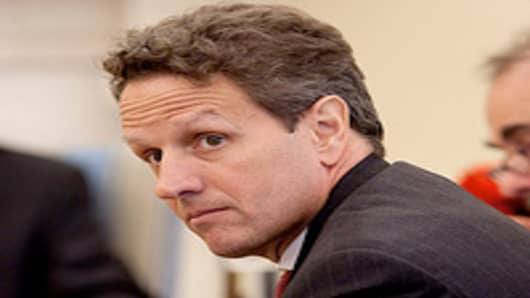Secretary of the Treasury Timothy Geithner attacks in the Washington Post what he considers “myths” about the Troubled Asset Relief Program (TARP). Mr. Geithner’s five mythsare that TARP: 1) cost taxpayers hundreds of billions of dollars, 2) benefited Wall Street to the exclusion of Main Street, 3) left our financial system in weakened condition, 4) increased concentration in the financial system, and 5) served as the centerpiece of the Obama Administration’s strategy to control the economy.
The fact that Mr. Geithner takes time from his busy schedule to defend a program that has expired, speaks volumes about the damage TARP is inflicting on politicians associated with it. It’s also telling that, even as Mr. Geithner defends TARP, he blames the program on the Bush Administration and claims that he and the Obama Administration inherited it.
Mr. Geithner reports that TARP will likely cost taxpayers less than $50 billion. Even assuming his estimate is correct, Mr. Geithner ignores the enormous cost of all of the other programs put into place to supplement TARP and the $150 billion of pork added to procure passage of the TARP bill. He also ignores that TARP – as proposed by then Secretary of the Treasury Henry Paulson, supported by the Federal Reserve (including Mr. Geithner), and passed by Congress – called for the purchase of $700 billion of “toxic assets” from Wall Street firms. That program clearly would have cost taxpayers hundreds of billions of dollars.


